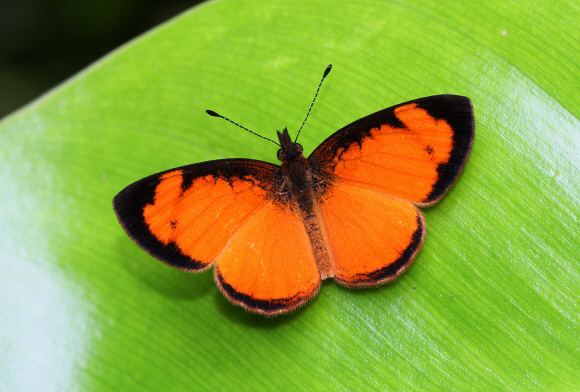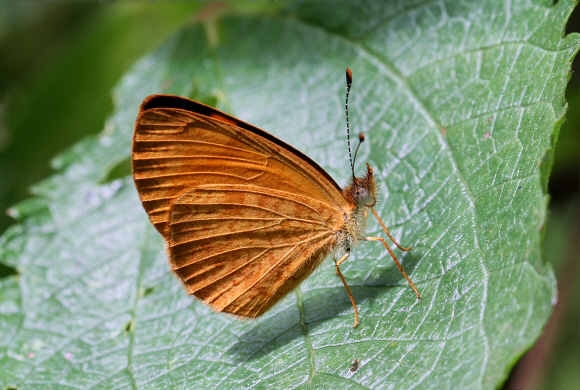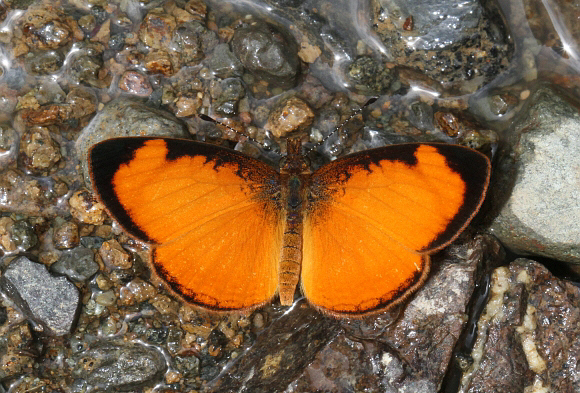
Introduction
The tribe Melitaeini is of worldwide distribution. It includes the Crescents and Checkerspots of North America, and also many familiar European species such as the Marsh, Spotted and Heath Fritillaries.
Most of the 14 Tegosa species have orange uppersides with blackish wing borders, and an irregular black diagonal streak across the forewing connecting the costa to the tornus. There are exceptions however e.g. tissoides is entirely dull earthy brown on the upperside, and nigrella is black with large white patches. The undersides of Tegosa species are brownish or greyish in colour, lightly marbled with dark-edged greyish blotches on the hindwings.
Tegosa claudina is distributed along the eastern Andes from Colombia to Bolivia.

Habitats
This species is associated with secondary growth and disturbed habitats in rainforest and cloudforest at elevations between about 200-1800m.

Lifecycle
Unknown, however the larva of the closely related Tegosa anieta is reputed to feed on Vernonia and Mikania ( Asteraceae ) so it is reasonable to assume that Asteraceae are commonly used by other Tegosa species.

Adult behaviour
Males are commonly seen in groups of up to a dozen, settled on wet ground at the sides of small streams or fords.

